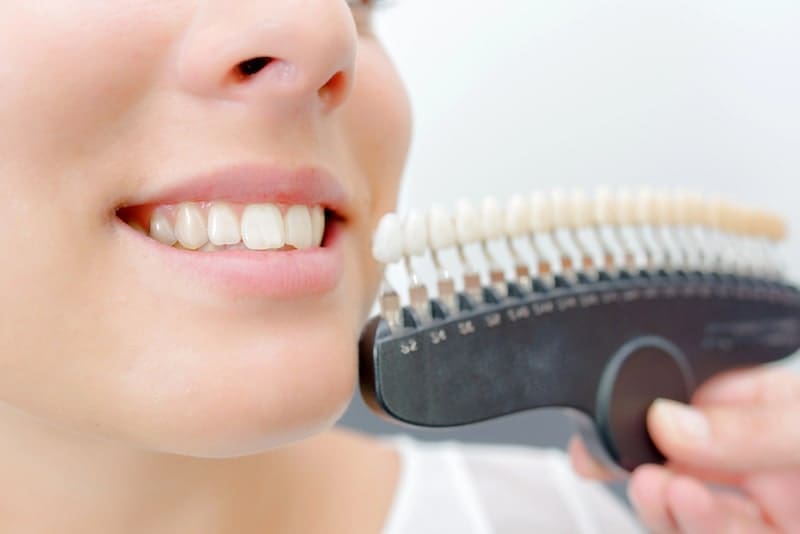Cosmetic dentistry has evolved significantly, offering a variety of options for individuals seeking to enhance their smiles. Among these options, dental veneers stand out for their ability to transform the appearance of teeth with minimal invasiveness. Veneers are thin shells, typically made from porcelain or composite resin, that are custom-fitted to the front surface of the teeth.
This technique allows for significant improvements in aesthetics, correcting issues such as discoloration, slight misalignment, and chips without the need for extensive dental work. In this article, we will explore how veneers compare to other popular cosmetic dentistry solutions, examining their advantages, disadvantages, and ideal candidates for treatment.
Advantages of Dental Veneers
One of the primary advantages of dental veneers is their ability to provide a dramatic improvement in the appearance of teeth with relatively little preparation required. Unlike crowns, which may necessitate significant tooth reduction, veneers typically involve only a minimal alteration of the tooth surface. This preservation of natural tooth structure makes veneers an appealing option for many individuals. Additionally, veneers can effectively correct a variety of aesthetic concerns, including discoloration, gaps between teeth, and misshapen teeth.
This versatility allows patients to achieve the flawless smile they desire without extensive procedures. If you’re wondering are veneers bad for your teeth, it’s essential to note that they are a conservative form of treatment compared to other cosmetic options. For example, dental implants require drilling into the jawbone, while teeth whitening can cause sensitivity and damage to the enamel. In contrast, veneers only require minimal preparation of the tooth surface.
Disadvantages of Dental Veneers
Despite their many advantages, dental veneers do have certain drawbacks that potential candidates should consider. One of the main concerns is the irreversible nature of the procedure; once the enamel is removed for veneer application, it cannot be restored. This means that individuals should be certain of their choice, as any future adjustments or replacements will require further dental work. Moreover, while veneers are designed to be durable, they can still chip or crack under excessive force or trauma, necessitating careful consideration about their suitability for patients with habits like teeth grinding or nail-biting.
Another disadvantage is the cost associated with dental veneers. They tend to be more expensive than other cosmetic treatments, such as teeth whitening or bonding, although this is often balanced by their longevity and aesthetic results. Additionally, dental insurance may not cover the cost of veneers since they are considered a cosmetic procedure rather than a necessary medical treatment. As a result, individuals seeking veneers should be prepared for the financial implications, and it’s advisable to consult with their dental provider to explore all available options.
Ideal Candidates for Veneer Treatment
Ideal candidates for dental veneers typically include individuals with good oral health who seek improvement in their smile aesthetics. This includes those with discolored or stained teeth that do not respond to whitening treatments, as well as individuals with minor misalignments or chips. It is crucial for candidates to have realistic expectations about the outcome and to realize that while veneers can achieve significant cosmetic enhancements, they are not a solution for all dental issues. Those with extensive dental decay or gum disease may need to address these problems before considering veneers.
Comparing Veneers to Alternative Treatments
When comparing veneers to other cosmetic dental treatments, such as crowns and bonding, a few key differences emerge. Crowns offer greater coverage and support for teeth that have experienced significant damage or decay, making them ideal for restorative purposes. However, the process of obtaining a crown is more invasive and requires more tooth reduction than veneers. On the other hand, dental bonding can be a more straightforward and cost-effective solution for minor imperfections. While bonding can yield satisfying results, it does not provide the same level of durability or aesthetic appeal as porcelain veneers.
In contrast, teeth whitening is a popular treatment for addressing discoloration without altering the tooth structure. While effective for many, whitening may not be suitable for all stains, particularly intrinsic stains that veneers can easily cover. Ultimately, the decision between veneers and alternative treatments should be guided by individual dental conditions, aesthetic goals, and consultations with dental professionals who can recommend the most appropriate solution.
Maintenance and Care for Dental Veneers
To ensure the longevity of dental veneers, proper maintenance and care are essential. Patients are advised to adhere to a strict oral hygiene routine that includes brushing twice a day with a non-abrasive toothpaste and flossing daily. It’s also wise to use a soft-bristled toothbrush to avoid scratching the veneer surface. Additionally, regular visits to the dentist for professional cleanings and check-ups will help in monitoring the condition of both the veneers and the underlying teeth.

Dental veneers present a highly effective cosmetic dentistry option for individuals looking to enhance their smiles with minimal invasiveness. While they offer numerous advantages, including minimal tooth alteration and the ability to rectify various aesthetic concerns, potential candidates must weigh the drawbacks such as cost and the irreversible nature of the procedure.
By understanding how veneers compare to other treatments, individuals can make informed decisions tailored to their unique dental needs and goals. Consulting with dental professionals is crucial to ensuring that patients select the solution that best fits their circumstances, ultimately leading to a beautiful, confident smile.


